Sundarban Mangrove Forest – Mystery and Allure
Sundarban forest has been of great fascination for me from my growing-up years in Calcutta. It was probably the lure of the mystery surrounding it. Or maybe the legend of the Royal Bengal Tiger that lives there. The various myths and legends – of spirits and Gods and Goddesses who rule the imagination there? Or the sheer resilience of the people who live there… Was it maybe the nature of the mangroves itself… In later life, writers like Amitav Ghosh increased the allure of this place. His book, The Hungry Tide, describes this fantasy-land and the lives that it hosts, very lovingly and in great detail. Let me try and bring out some of the excitement of this place for you…
Where is the Sundarban?
The great rivers of Ganga, Brahmaputra and Meghna drain into the Bay of Bengal in the eastern part of India. A delta is formed at this place. It stretches from the River Baleswar in Bangladesh to the River Hooghly in West Bengal. That’s a huge stretch of land (more than ten thousand square kilometers) with mangrove forests, farmlands, mudflats and barren land. Many tidal streams cut through the delta. Four areas in the Sundarban are UNESCO World Heritage Sites! This is the meeting point of various rivers with the sea – a meeting point of fresh river water and the salt water of the Bay of Bengal.
What does the Sundarban hold?
There are 2 eco-regions here – the “Sundarbans freshwater swamp forests” and the “Sundarbans mangroves”. This is one of the 3 largest mangrove forests in the world. Lots of trees, lots of birds and animals, fish and most importantly, mystery and romance! The most abundant trees are the Sundri tree.
The origin of the name Sundarban for the forest
The name may have come from the Sundri tree there – “ban” means forest and hence Sundarban. Or maybe because of the fact that “Sundarban” means “beautiful forest” in Bangla, the local language. It could also be a common-usage of “Shomudrobon”, meaning “Sea forest” in Bangla. Or could it be from a tribe that lived here called “Chandra-bandhe”. Whatever the story, the name Sundarban is one that evokes curiosity isn’t it?
The history of the Sundarban
This forest has witnessed a lot of history. Right from the 2nd and 3rd century AD. Closer to our times, there are records of the Mughals leasing the forests out. In fact, many escaped to this forest to avoid the armies of the Mughal Emperor Akbar. Then came the Portuguese pirates and dacoits in the 17th century. The British got rights over the forest from the Mughal Emperor Alamgir II around the time of the Revolt of 1757.
The major draw – the Royal Bengal Tiger
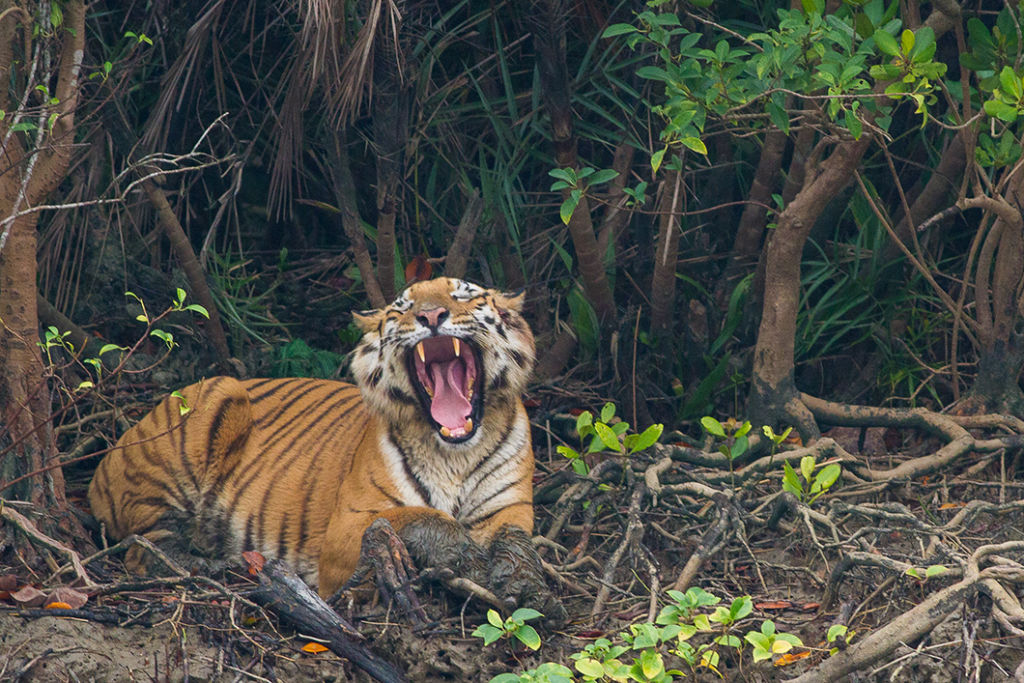 This forest houses the Royal Bengal Tiger (Panthera tigris tigris) and other small cats like the Jungle cat, Fishing cat and Leopard cat. Strangely, the tigers here live and swim around. Their prey is typically, deer, boar and monkeys. There are an estimated 180 tigers here. And about 30,000 spotted deer. Many villagers live in and around the forest. They live off the forest and its produce – fish, honey, wood, etc. There is obviously some man-animal conflict with such close proximity… About 30-100 human lives are lost due to this every year.
This forest houses the Royal Bengal Tiger (Panthera tigris tigris) and other small cats like the Jungle cat, Fishing cat and Leopard cat. Strangely, the tigers here live and swim around. Their prey is typically, deer, boar and monkeys. There are an estimated 180 tigers here. And about 30,000 spotted deer. Many villagers live in and around the forest. They live off the forest and its produce – fish, honey, wood, etc. There is obviously some man-animal conflict with such close proximity… About 30-100 human lives are lost due to this every year.
The Birds of the Sundarban
Close to 300 species of birds, including many endemic species, make this their home. There are the endemic brown-winged kingfishers, the masked finfoots, ospreys, sea eagles and fish eagles… Not to mention, the ibis, the storks, water hens, kites, coots, pelicans, etc.
The Animals of the water
Again too many to name – from crocodiles to sawfish, various turtles and snakes from the King cobra to vipers and pythons… Fish are aplenty from the eels to the shrimps, mudskippers and even the Gangetic dolphins…
The strange Mudflats of the Sundarban
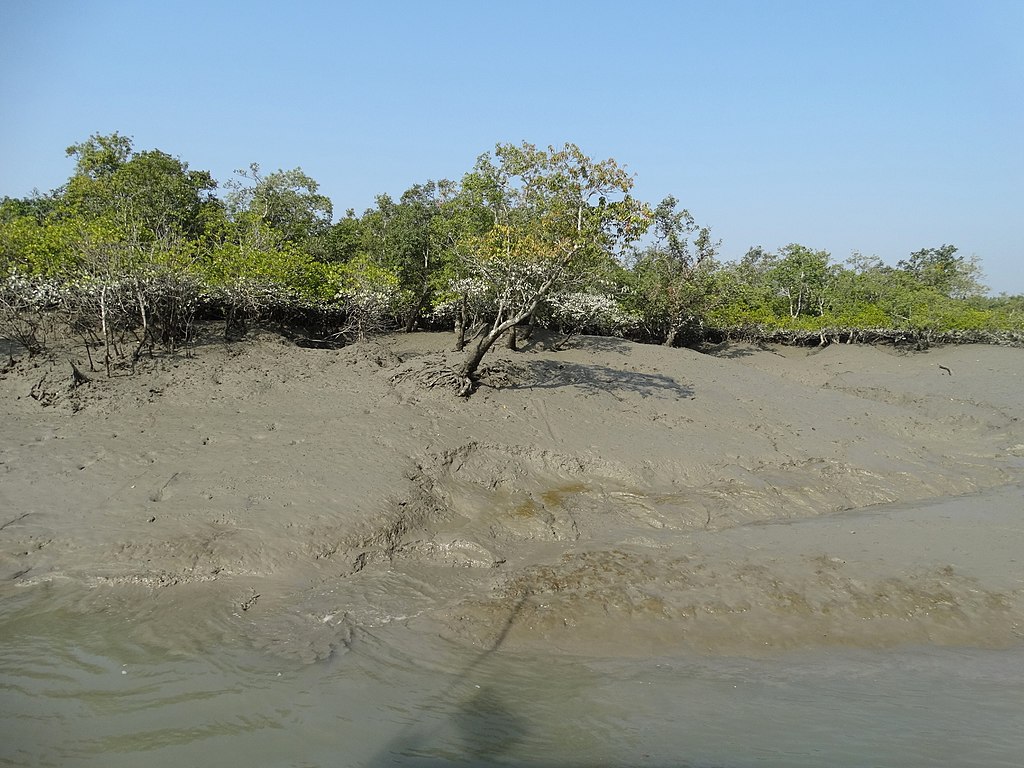 The mudflats are formed by the wave motions, tidal cycles and currents in the coasts. They change with the monsoons and cyclonic movements that are common here. Every monsoon, most of this delta goes under water for about 6 months. This leaves sediments on the land when the water recedes. By the way, due to all of this, freshwater diversion (and hence increased salinity), human development activities, climate change, rising sea levels and the tectonic movement, the Sundarban coast is retreating by about 200 meters every year.
The mudflats are formed by the wave motions, tidal cycles and currents in the coasts. They change with the monsoons and cyclonic movements that are common here. Every monsoon, most of this delta goes under water for about 6 months. This leaves sediments on the land when the water recedes. By the way, due to all of this, freshwater diversion (and hence increased salinity), human development activities, climate change, rising sea levels and the tectonic movement, the Sundarban coast is retreating by about 200 meters every year.
The importance of the Sundarban
Fishing, shrimp culture, forest produce like timber and the other activity contribute hugely to the economy of the region. More importantly, the forest provides habitat to many animals and birds and even purifies water. It is also a storm barrier for this region that is ravaged by cyclones almost every year. In addition, tourism is quite a budding draw here.
The Threat to the Sundarban
The ecological quality and biodiversity of the forest is going down. And there is loss of species. This is despite laws banning poaching, etc. The threat is from human greed and industrial projects coming up nearby. As also natural causes like cyclones, rising sea-levels and reduction in fresh water supply.
The Culture and Beliefs
The locals worship various forest Gods and Goddesses here. For instance, there is Manasa, the deity of snakes. Or the much-followed BonBibi (Goddess of the Forest). They are celebrated and prayed to through many folk dances and songs. In fact, whether it be tradition, ritual, song, dance or prayer, the forest is never far from it…
The Legend of the BonBibi
The name literally translates as “Lady of the Forest”. The most popular story is that she was an Arabian Sufi saint’s daughter who came to the Sundarban. She battled the villainous Dokkhin Rai who killed the locals in the form of a tiger. The arrangement is that Dokkhin Rai would not kill anyone who prayed to BonBibi. This continues even now…
Sundarban in literature
Many novels and works of modern fiction, both folk and otherwise, describe or are set in this land. For instance, the Manasamangal (a Bangla folk novel), Emilio Salgari’s Mystery of the Black Jungle, Salman Rushdie’s Midnight’s Children, Kunal Basu’s Japanese Wife, and Amitav Ghosh’s Hungry Tide.
Places to see in the Sundarban
This is raw nature and forests. That’s what is to be experienced – wildlife and life around nature. There are many settlements and human life built around nature is quite a study… Here are some of the important places inside:
- The Sajnekhali and Burirdabri Watch Towers – great vantage points for for wildlife sighting
- Kalash Island – for the nesting Olive Ridley turtles and birds in winter
- Henry Island – a dense walk-able forest
- Netidhopani – The ruined settlements on the Mughal leased land, a 400-year old Shiva temple and nature
How to get there
You can visit this forest from both India and Bangladesh.
In the India side, tours to the forest happen by boat from Calcutta (Kolkata). The National Park is about a 100 kms from Kolkata (very well-connected by air, train and road). You could take a train/ car to Canning and from there to Godhkhali Jetty. You can take a boat from here into the Sundarban.
On the Bangladesh side, you could fly to Jessore and from there by road to Khulna which is at the entrance to the Sundarban. Alternatively, you could take a train/ bus from Dhaka to Khulna. The best trips into the Sundarban are overnight and by boat into the forest.
When to visit the Sundarban
Ideally, November to March, for great weather and the best opportunities for wildlife sighting. The summers of April-June can get fairly hot and uncomfortable. The other months are monsoons, and a bad time to visit.
Wildlife in India
In case you are keen on traveling to the Sundarban through India, you could club this with a trip to Bengal in India. Take a look at a short Sundarban focused itinerary or a more immersive Bengal itinerary with a Sundarban visit .
In case you would like to visit the Sundarban in Bangladesh, write to us – we will be glad to help curate an experience for you.
For more such experiences, check out the other wildlife experiences in India. And in case you are a nature lover, check out the natural wonders of India.
India is not just about wildlife. There are many more facets to this ancient land – culture, mystery, history, nature, wildlife and so on. Read more about how the different facets of India travel are celebrated.
For experiential travel across India, Asia, Europe and Africa, please visit Beyonder Travel.

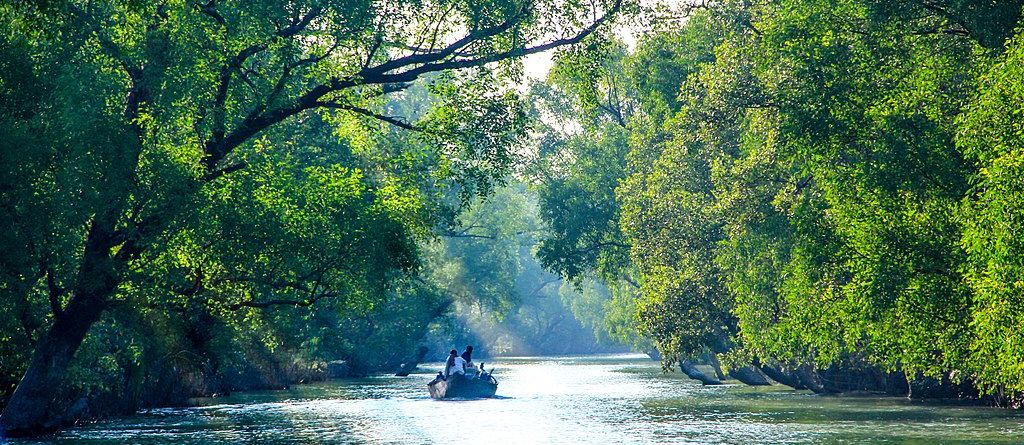
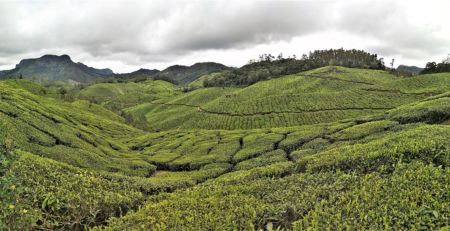
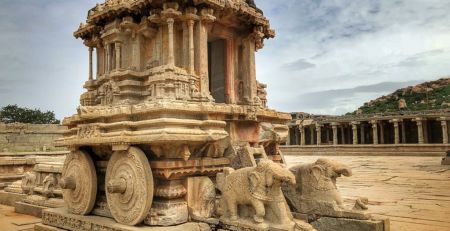


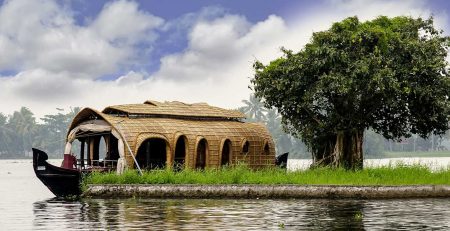



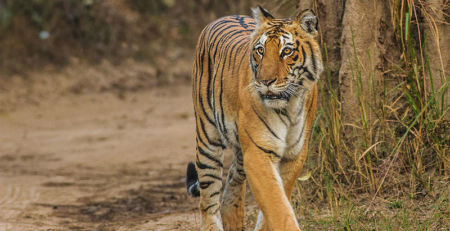
Leave a Reply